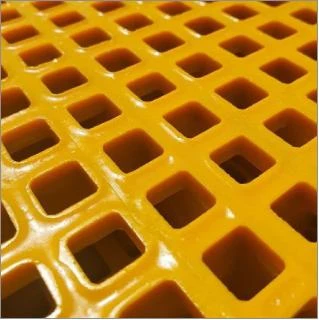loading...
- No. 9, Xingyuan South Street, Dongwaihuan Road, Zaoqiang County, Hengshui, Hebei, China
- admin@zjcomposites.com
- +86 15097380338
- Welcome to visit our website!
Exploring the Versatility of FRP Structural Shapes in Modern Engineering Applications
FRP Structural Shapes Revolutionizing Construction and Engineering
Fiber Reinforced Polymer (FRP) has emerged as a transformative material in the construction and engineering industries. Known for its high strength-to-weight ratio, corrosion resistance, and design flexibility, FRP is increasingly being utilized in various structural shapes to meet modern demands for durability and efficiency. This article will delve into FRP structural shapes' properties, applications, benefits, and future trends.
Understanding FRP Materials
FRP consists of a polymer matrix reinforced with fibrous materials, such as glass, carbon, or aramid fibers. The combination of these materials results in a composite that possesses superior mechanical properties. The lightweight nature of FRP allows for simpler handling and transportation, making it an appealing option for construction projects. Furthermore, FRP is not susceptible to rust or corrosion, which is particularly advantageous in environments such as coastal regions, chemical plants, or areas prone to severe weather conditions.
Key Properties of FRP Structural Shapes
1. Strength and Durability FRP exhibits high tensile strength, making it capable of sustaining considerable loads without deformation. Its resistance to fatigue further enhances its lifespan, which can be significantly longer than traditional materials.
2. Corrosion Resistance Unlike conventional steel, FRP does not corrode, making it ideal for applications where exposure to moisture or chemicals might be an issue. This quality reduces maintenance costs and extends service life.
3. Lightweight The lightness of FRP facilitates easier installation and reduces transportation costs. This attribute is especially beneficial in applications where weight is a critical factor, such as in bridges or overhead structures.
4. Design Flexibility FRP can be molded into various shapes and sizes, providing architects and engineers the freedom to create innovative structural designs that may be challenging with traditional materials.
Applications of FRP Structural Shapes
FRP is versatile and can be used in numerous applications across different sectors
- Infrastructure FRP is increasingly being employed in the construction of bridges, railways, and buildings. Its corrosion resistance makes it ideal for use in components exposed to harsh environmental conditions.
frp structural shapes

- Marine Applications Due to its resistance to saltwater and excellent mechanical properties, FRP is widely used in the construction of boats, piers, and other marine structures.
- Aerospace and Automotive The aerospace and automotive industries utilize FRP to manufacture lightweight components that enhance fuel efficiency and performance.
- Energy Sector FRP is employed in wind turbine blades and components due to its lightweight and strong nature, contributing to more efficient energy production.
Benefits of Using FRP Structural Shapes
The use of FRP structural shapes offers several benefits
1. Cost-Effectiveness Though the initial investment in FRP may be higher than traditional materials, the long-term savings from reduced maintenance and extended lifespan can offset these costs.
2. Sustainability FRP materials can be manufactured with sustainability in mind. Many are produced from recycled materials and can be recycled at the end of their life cycle.
3. Improved Safety The non-conductive nature of FRP makes it a safer alternative in electrical applications, reducing the risk of accidents.
Future Trends in FRP Use
As technology advances, the potential for FRP materials continues to grow. Research is underway to enhance the properties of FRP, including increasing its fire resistance and improving its environmental resistance. Moreover, the implementation of digital fabrication techniques may further revolutionize how FRP structural shapes are designed and manufactured.
In conclusion, FRP structural shapes are redefining the possibilities in construction and engineering. Their unique combination of strength, lightweight nature, and resistance to environmental degradation makes them an ideal choice for a wide array of applications. As the industry continues to innovate, the future of FRP looks promising, paving the way for more efficient, durable, and sustainable infrastructures.
-
GRP Structures: The Future of Lightweight, High-Performance EngineeringNewsJun.20,2025
-
FRP Water Tank: High-Performance Storage for Corrosive and Clean Water SystemsNewsJun.20,2025
-
FRP Square Tube: The New Industry Standard for Chemical and Structural ApplicationsNewsJun.20,2025
-
FRP Pultruded Profiles: The Ultimate Choice for Lightweight Structural StrengthNewsJun.20,2025
-
FRP Handrails: The Safer, Smarter, and Stronger Choice for Modern InfrastructureNewsJun.20,2025
-
FRP Grating: The Smart Solution for Durable, Lightweight Industrial FlooringNewsJun.20,2025
-
Why Choose a Galvanized Water Tank for Your Storage NeedsNewsMay.21,2025
